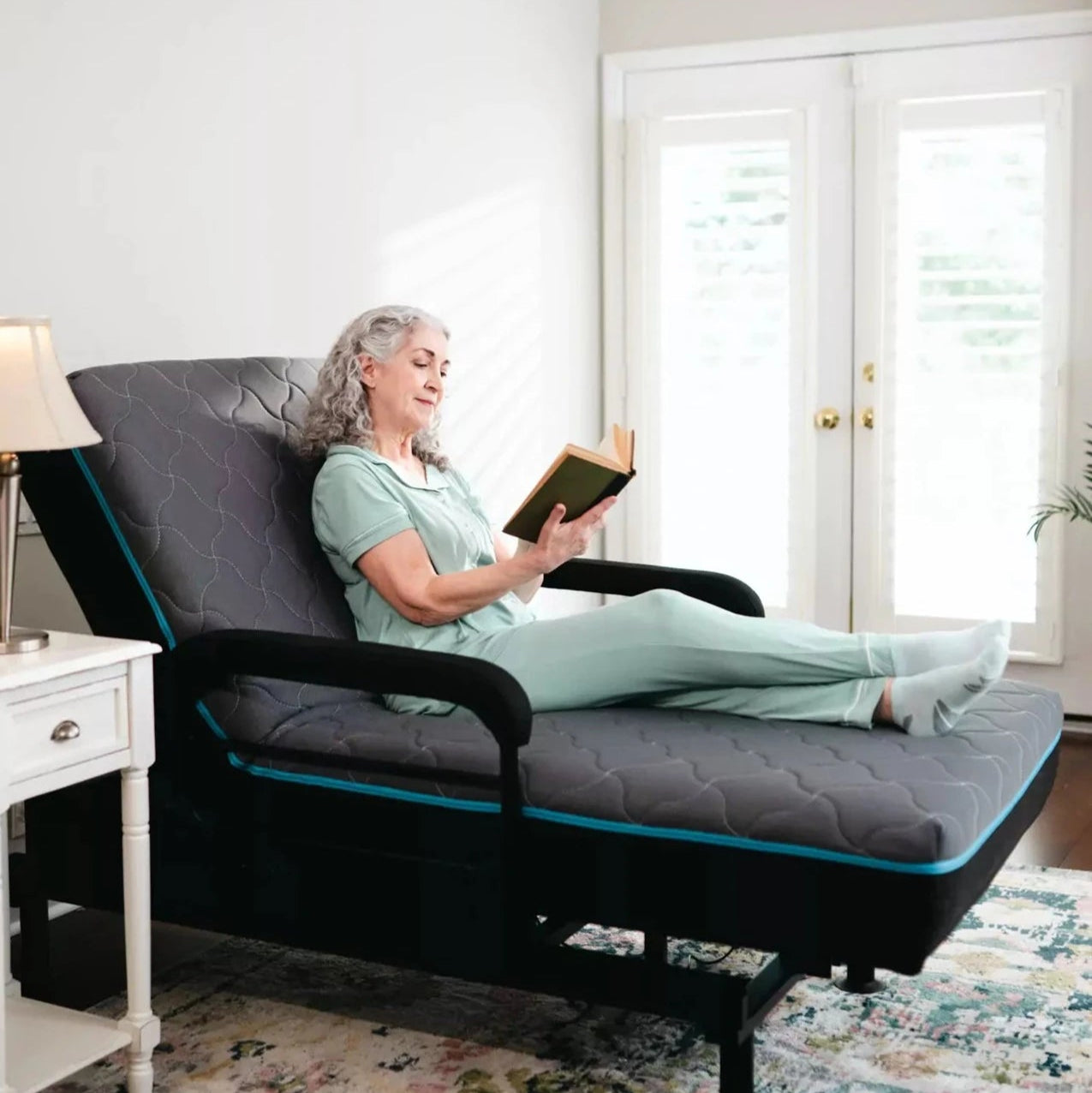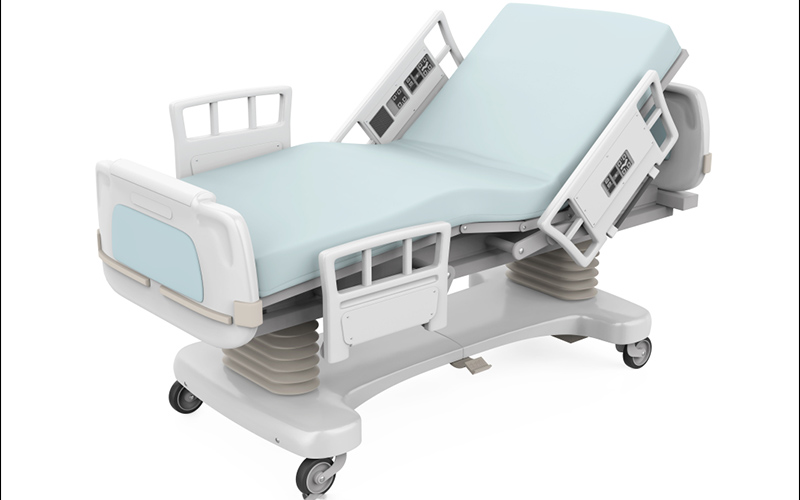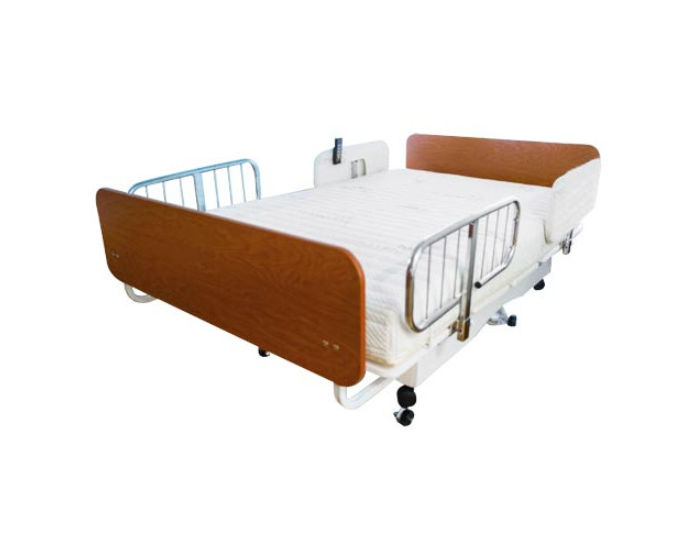An Unbiased View of Hospital Beds For Home Use
An Unbiased View of Hospital Beds For Home Use
Blog Article
Hospital Beds For Home Use Can Be Fun For Everyone
Table of ContentsHospital Beds For Home Use for BeginnersFacts About Hospital Beds For Home Use RevealedExcitement About Hospital Beds For Home UseThings about Hospital Beds For Home UseThe Facts About Hospital Beds For Home Use UncoveredThe Best Strategy To Use For Hospital Beds For Home UseThe smart Trick of Hospital Beds For Home Use That Nobody is Discussing
There are 3 major sorts of hospital beds: handbook, semi-electric, and fully-electric. However, more sorts of clinical beds exist and they are listed here. These beds use hand cranks to readjust the bed's elevation and elevate and reduce the head and the foot. Hand cranks are commonly discovered at the foot of the bed and need an individual that is literally efficient in operating.
Semi-electric beds have an electric motor to elevate and reduce the head and foot sections of the bed (hospital beds for home use). Full-electric beds have an electric motor that can raise the head and foot sections of the bed as well as the entire height and positioning of the bed.
See This Report on Hospital Beds For Home Use
There are several types of healthcare facility beds, each developed to meet specific person requirements. Below are some usual types: This is the most usual kind of healthcare facility bed, made for general medical use.
Reduced to the ground than a standard bed. This kind of bed is designed for larger people, with a wider frame and higher weight ability than a common bed.
This kind of bed is made for seriously sick clients that call for open monitoring and specialized clinical tools such as ventilators and mixture pumps. This sort of bed is developed for use throughout labor and distribution, with adjustable positions and functions to support the mommy and child during the birth process.
Rumored Buzz on Hospital Beds For Home Use
Multiple feature and the devices do increasing traction to various parts of the vertebra and the extremities without relocating the body. These are just a few instances of the kinds of medical facility beds offered. The specific kind of bed used will rely on the patient's problem, medical demands, and other factors.
Here is the important things you need to recognize. A one-function medical facility bed is a clinical bed that allows an individual to relocate only the head or foot area up or down. A 2 function medical facility bed generally refers to a kind of medical bed that has 2 flexible functions to help patients in hospitals or care centers.

More About Hospital Beds For Home Use
A 7-function ICU bed is a type of medical bed that supplies several adjustable features to support seriously ill clients in an extensive treatment system (ICU) (hospital beds for home use). The seven features generally consist of: Backrest modification: The backrest can be adapted to numerous angles to assist the patient sit up or helpful resources exist down conveniently
Elevation modification: The bed can be elevated or lowered to make it simpler for people to get in and out of bed, and for caregivers to offer care. Trendelenburg placement: The whole bed can be slanted to advertise blood flow and circulation in the body. Reverse Trendelenburg position: The bed can also be tilted in the contrary direction to promote blood circulation and circulation in the top body.
1. What Dimension is a Healthcare Facility Bed? 2. Exactly how Much Does a Healthcare Facility Bed Price? 3. Why Do Hospital Beds Have Side Rails? 4. What Are The Main Medical Facility Bed Components?. While more inexpensive than electric designs, these beds call for physical initiative for adjustments. The main advantages of hand-operated beds are their cost and dependability, as they do not depend on electrical energy. Nevertheless, the demand for hand-operated initiative can be a constraint in situations where quick changes are needed or where caregivers deal with physical obstacles.
An Unbiased View of Hospital Beds For Home Use
Semi-electric hospital beds use an equilibrium of manual and electrical controls. These beds give an optimal middle ground between manual and totally electric choices, offering convenience of use without the complete expense of electrical versions.
Semi-electric beds are appropriate for patients that require modest modifications to the head and foot sections yet can manage without constant height adjustments. This makes them an economical service for those seeking comfort and comfort without the need for consistent repositioning. Completely electric health center beds feature electric controls for seamless changes to the height, head, and foot sections.
Specialty health center beds, such as ICU beds, lasting care beds, and bariatric beds, are thoroughly created to resolve certain clinical requirements. These beds provide customized take care of diverse patient groups, improving both results and comfort. In the following areas, we will check out a knockout post the main kinds of specialty healthcare facility beds, describing their specific advantages and applications.
With years of experience in producing electric linear actuators - hospital beds for home use and close collaboration with the medical care sector, TiMOTION is well-positioned to supply trustworthy health care remedies. Our vertically integrated firm takes care of every step of the manufacturing procedure, from design to actuator setting up, guaranteeing we deliver extraordinary value and customized options tailored to your specific needs
The Ultimate Guide To Hospital Beds For Home Use

To find out more regarding integrating these modern technologies into your items, contact us today. Additional reading:.
Information is sourced from the Medicare Cost Record.

Examine This Report about Hospital Beds For Home Use
A medical facility bed is a bed designed especially for medical purposes. It is not just a place for patients to rest, but additionally a system additional resources for medical operations. Unlike ordinary home beds, healthcare facility beds typically have flexible features, which can help with clinical personnel to make various modifications according to the requirements of patients, such as altering the height, inclination, and assistance angle of the back and legs of the bed.
Report this page